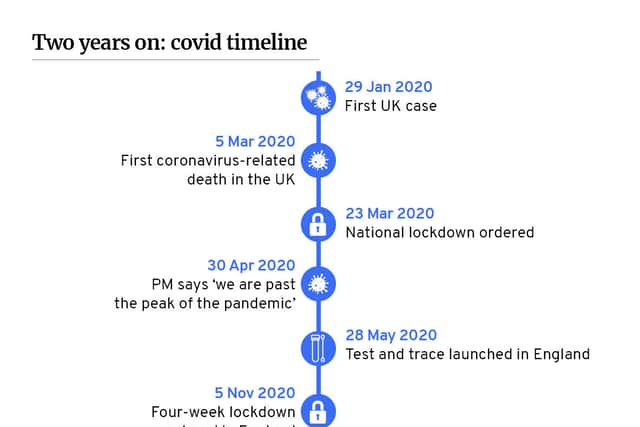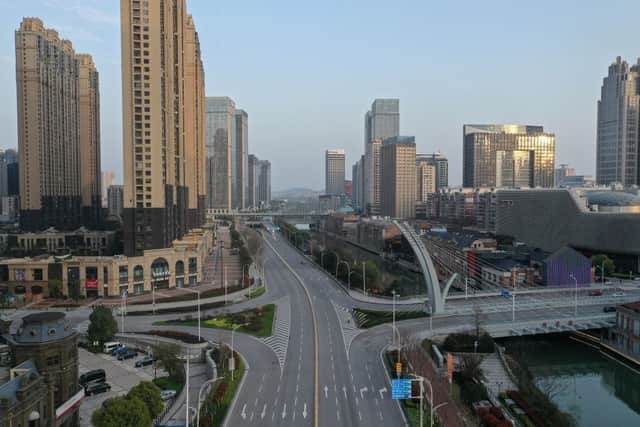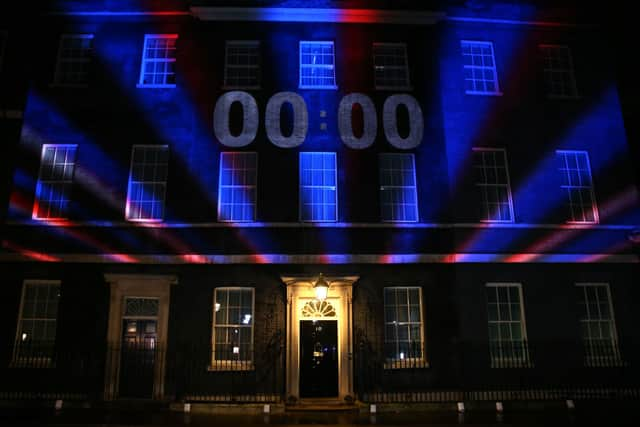When did Covid start in the UK? Remembering first case of coronavirus 2 years ago - and how we felt about it
This article contains affiliate links. We may earn a small commission on items purchased through this article, but that does not affect our editorial judgement.
and live on Freeview channel 276
Today (29 January) marks exactly two years since the Covid-19 pandemic was first officially discovered on UK shores.
The virus has completely dominated our lives for the last 24 months.
Advertisement
Hide AdAdvertisement
Hide AdNot only have many of us lost loved ones or had to watch from afar as our friends and family suffered, but we’ve also had to cope with the personal challenges brought about by multiple lockdowns and a near-constant national focus on death and illness.
So, as the UK marks this grim milestone, NationalWorld is taking a look back at how the Covid-19 pandemic started in the UK.


How did the Covid pandemic reach the UK?
The first official case of Covid-19 was recorded in the UK on 29 January 2020.
By this point, Covid had become an increasing presence in the national conversation as images emerged of empty streets in the Chinese city of Wuhan, which had gone into a strict lockdown on 23 January.


Advertisement
Hide AdAdvertisement
Hide AdHowever, the news was still dominated by Brexit and Prince Andrew (some things never change).
The first UK patient, whose identity is still unknown, was a Chinese woman from Hubei province who had been visiting her son - a student at the University of York.
She fell ill on 26 January, just two days after the then-Health Secretary Matt Hancock had briefed reporters the risk to the UK was low.
By 29 January, both the woman and her son were suffering with a fever and a dry cough.
Advertisement
Hide AdAdvertisement
Hide AdThe son called NHS 111 and that evening, two paramedics arrived at their hotel in hazmat suits to take the pair to hospital in Hull.
The next day, the World Health Organisation (WHO) declared the pandemic to be a global emergency and the UK raised its risk level to moderate.
Tests conducted at Public Health England’s lab in Colindale, London, confirmed the pair had Covid-19, with the results announced to the general public on 31 January.
The mother and son were also transferred to a specialist unit in Newcastle on 31 January and remained there until they had recovered on 17 February.
Advertisement
Hide AdAdvertisement
Hide AdBy this point, the track and trace system had found no other cases linked to the pair.


How did the UK react?
Despite news of the virus’ arrival on 31 January, it was a day completely dominated by Brexit.
On that date, the UK left many of the EU’s institutions and entered a transition period.
It was a day the Prime Minister Boris Johnson probably hoped would come to define his premiership - and perhaps it did, just not in the way he could have expected.
Advertisement
Hide AdAdvertisement
Hide AdIt wasn’t until 26 February that most front pages came to be dominated by Covid.
By this point, cases were surging in Italy and the Sage group of scientific advisors were recommending schools be shut to curb transmission.
There had been 80,000 officially recorded cases worldwide and 2,700 deaths.
On this date, Matt Hancock told MPs in the House of Commons that the Government’s plan was: “Contain. Delay. Research and Mitigate”.
Advertisement
Hide AdAdvertisement
Hide Ad“If anyone has been in contact with a suspected case in a childcare or an educational setting, no special measures are required while test results are awaited,” he said.
“There is no need to close the school or send other students or staff home.”
Mr Hancock also advised people to “take sensible precautions” like “using tissues” and increasing the frequency of handwashing.
Just under a month later, the UK entered a national lockdown it wouldn’t emerge from until June.
A message from the editor:
Advertisement
Hide AdAdvertisement
Hide AdThank you for reading. NationalWorld is a new national news brand, produced by a team of journalists, editors, video producers and designers who live and work across the UK. Find out more about who’s who in the team, and our editorial values. We want to start a community among our readers, so please follow us on Facebook, Twitter and Instagram, and keep the conversation going. You can also sign up to our email newsletters and get a curated selection of our best reads to your inbox every day.
Comment Guidelines
National World encourages reader discussion on our stories. User feedback, insights and back-and-forth exchanges add a rich layer of context to reporting. Please review our Community Guidelines before commenting.
